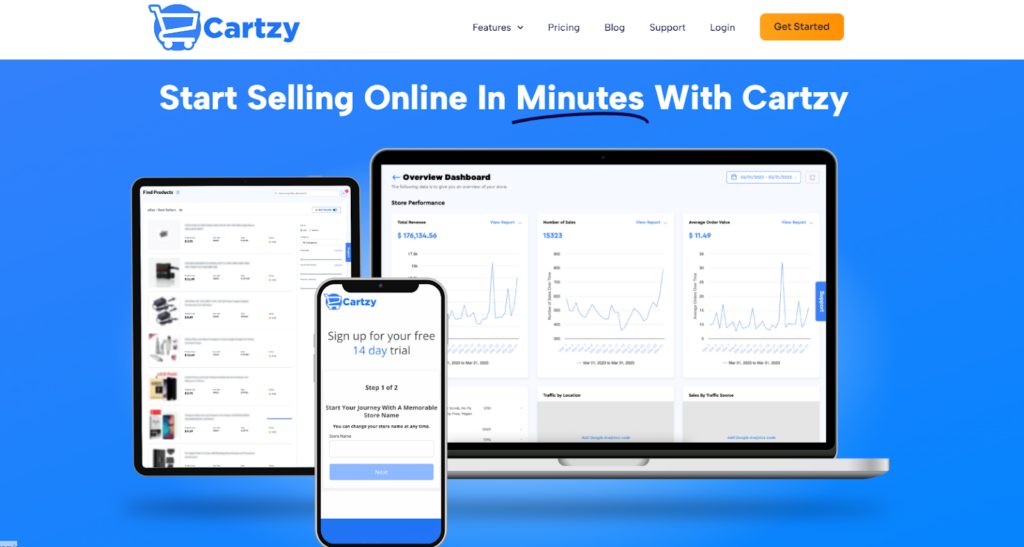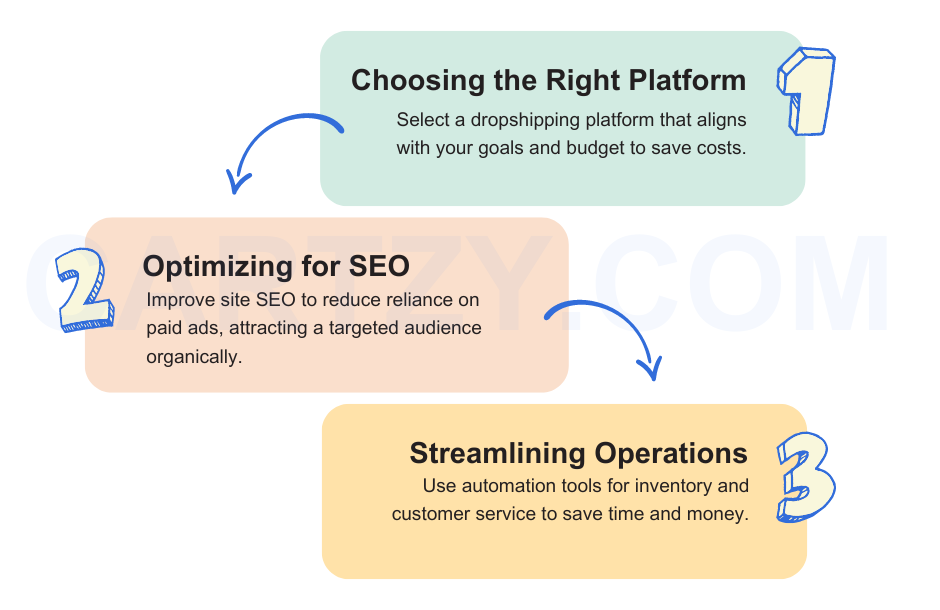Dropshipping has changed the way people start their online businesses by removing the necessity to manage inventory. It is a more intelligent, trouble-free route for entrepreneurs. But as you embark on this journey, one critical question looms large: What is the actual cost of your dropshipping platform?
Picture setting up an online shop with a very little upfront capital, selling all around the world without ever handling the stocks. It’s more than a dream, it’s the reality of dropshipping: a business model that has brought e-commerce to the masses. But the dropshipping platform that you choose can have a very significant impact on the profitability and development of your business. Given that each platform has their distinctive features and pricing structures, knowing the real cost you have to pay for is important.
Unveiling the Hidden Costs of Dropshipping Platforms

Dropshipping platforms are like an iceberg-laden journey. What you see above the waterline is the subscription fees; it is just a tip of the iceberg! Below the surface, there are many costs which can easily accumulate and have an impact on your bottom line. Let’s sail through these hidden costs and avoid them altogether so that your dropshipping trip doesn’t suddenly hit an iceberg.
Subscription Fees
Subscription fees seem simple at first look. One may potentially choose Shopify because of its powerful e-commerce tools, signing up for a $29 monthly plan, or WooCommerce for its free plugin, paying only for web hosting. However, this is only the start. Going with a monthly plan is more flexible, but do you realize going with an annual plan could save you a big chunk of money? It is not a purely financial decision; it is a strategic one that demands that you weigh your budget against the growth path and requirements of your business.
Transaction Fees
And here is where the things become a little bit more complicated. Every time you make a sale, your platform will eat into your profit. For example, Shopify charges as much as 2% per transaction (unless you use Shopify Payments). Sounds minimal, right? However, think about this charge eating into your margins on each and every sale. This “small” percentage can grow with time to an appreciable chunk of your revenue, especially as you scale. Considering these charges in your pricing policy is very important for making profit.
Add-on Features and Integrations
Your dropshipping platform might be fully functional for you, but as you grow, you will probably need more tools – SEO improvements, email marketing plugins, or advanced analytics. Each add-on comes at a cost, and although these tools can take your business to the next level, they also inflate your operating costs. It is a tricky balancing act of using these features to grow and keeping an expense sheet lean.
Comparing Popular Dropshipping Platforms

The choice of a dropshipping platform is a critical one that can shape the course of your business. Let’s review some of the most popular platforms to make the best decision.
Shopify
Shopify is the epitome of e-commerce triumph, with its user-friendly interface, huge app store, and strong customer service. Pricing begins at $29 per month, but you may need to subscribe to many apps to completely utilize the power of Shopify, and each app will increase your monthly bill. Nevertheless, the simplicity of use and the flexibility it brings can make the costs reasonable for a lot of entrepreneurs.
WooCommerce
WooCommerce makes a strong argument for the tech-savvy. Being a free WordPress plugin, it can be customized to a great extent, which is both a pro an a con. Even though the initial costs are likely to be lower, particularly if you are already paying for WordPress hosting, the cost of paid extensions and ongoing development work can be substantial.
BigCommerce
BigCommerce is also a heavyweight in e-commerce, and it has comparable pricing to Shopify. It is distinctive with its all-in-all approach, providing more off-the-shelf features than its rivals. This is a two-edged sword; it eliminates the need for add-ons, but you may pay for functionalities that you don’t need.
Oberlo
Favored by Shopify users, Oberlo hastens the importation of products from suppliers to your store. Its basic version is free, although if you want to scale up, you have to pay. The Shopify integration involves paying two sets of fees – one for your store platform and another for your product sourcing.
Cartzy
Cartzy.com is quickly becoming a notable player in the dropshipping scene, setting itself apart with an easy to use approach and a number of features specifically for dropshippers. Priced at a competitive rate, Cartzy aims to make e-commerce easier for entrepreneurs by providing an all-in-one platform that covers product sourcing, website design, and integrated marketing tools. Even though Cartzy is rather new on the scene, its pricing model is clear with the focus on value for money. This could be an appealing choice for those who are interested in minimizing the number of third-party tools and services that they have to deal with, and hence, reducing the overall costs.

The Real Cost of Running a Dropshipping Business
Knowing the platform fees is just the beginning. To truly understand the financial consequences of your dropshipping business, you must take under consideration the whole range of operational expenses.
Website Design and Development
Your website is the heart of your dropshipping business. It is not only about the looks, it is about the functionality, user experience, and conversion optimization. At first, you might go for a simple theme to cut down costs, but as your business expands, a custom design becomes priceless. If you hire a professional designer or developer, you can expect to spend from hundreds to several thousand dollars, depending on your needs. Keep in mind that a good web design is an investment in customer satisfaction and sales conversions.
Marketing and SEO
The “Build it and they will come” philosophy does not hold water in the ocean of e-commerce. Good marketing and SEO are the keys to bring traffic to your store. Sponsored posts on social media and search engines can get expensive very fast, but they are often necessary to get the initial traction. However, SEO is a more sustainable, long-run traffic source upon which time and effort should be spent. Keep in mind that both paid and organic approaches continuously consume resources, which can be money or time.
Inventory and Supplier Management
Despite the fact that dropshipping does away with the need for physical inventory, it is the management of your product catalog and supplier relationships that remains a cost-intensive aspect. Selecting trustworthy suppliers as well as bargaining for good terms can have a big effect on your profit margins. Further, you may need to rethink the decision of investing in inventory management software to make your business operations efficient as you scale, which will be another layer of operational costs.
How to Cut Costs Without Losing Quality

If you have the right strategies, you can cut your operational costs without sacrificing the quality of your products or the customer experience.
-
Choosing the Right Platform for Your Needs
The first way to reduce the costs is choosing a dropshipping platform that fits your business objectives, scope and budget. Think about the initial costs and what each platform gives you in terms of features, scalability, and support. For instance, a more expensive platform upfront that comes with high-level analytics tools would actually save you money on third-party services in the long run.
-
Optimizing Your Site for SEO
Devoting time and effort in optimizing your site for search engines makes you less dependable on paid advertising. Concentrate on the production of good quality content, appropriate keywords, and faster loading speed to boost your organic search rankings. Not only does this save costs but also brings a more targeted audience to your site.
-
Streamlining Operations
Automating tools for inventory management, order processing, and customer service will reduce the need for manual intervention and thus savings in time and money. Most of the dropshipping platforms provide native tools or third-party app integrations that can automate different parts of your business. Although there might be initial costs, efficiency advantages can yield significant savings for you over time.
Conclusion
Starting a dropshipping business is an adventurous ride full of possibilities and risks. Knowing the whole range of costs that are related to dropshipping platforms and other operational costs is one thing you cannot afford to neglect in creating a profitable business. Choosing the right platform, optimizing your operations, and learning from your experiences will allow you to build a successful dropshipping business that is sustainable.
Remember: the objective is not only to reduce costs, but also to invest strategically in places that foster growth and customer satisfaction. With the right strategy, your dropshipping business can succeed, giving you an enjoyable entrepreneurial journey.






